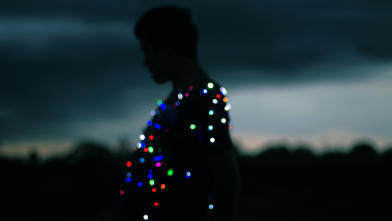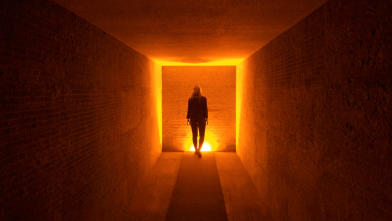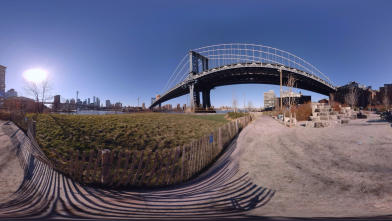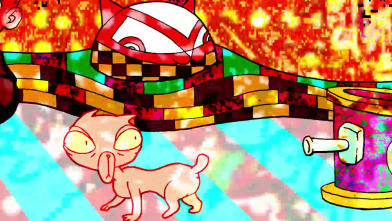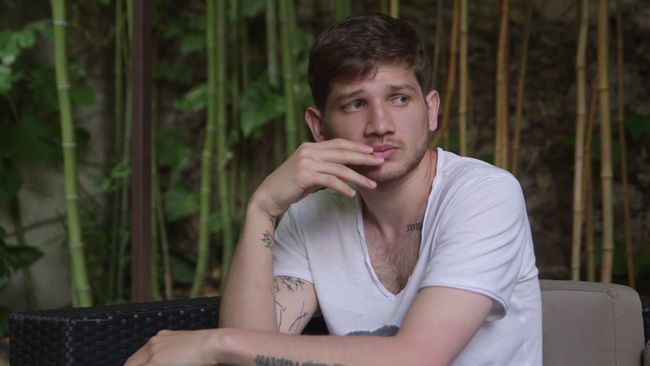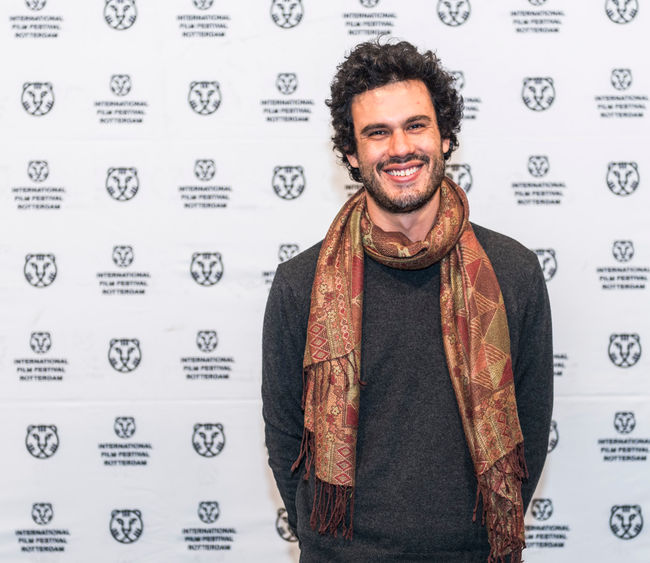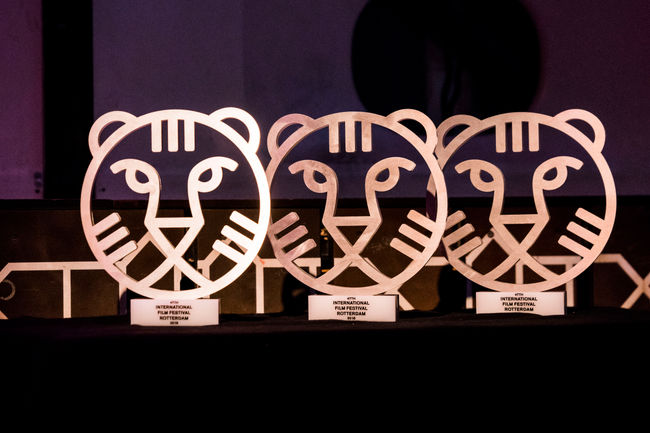Cinema, From the Inside Out
10 February 2018
One of my most favorite childhood memories with cinema is sitting on one of the large floor mats placed on an open field in a tiny village called Bibirhat in rural Bangladesh, on a misty January evening of 1994. A local cultural group was holding a film screening by renting a projector and a white screen from the nearest city – an annual village tradition. Hundreds of villagers flocked to the field to watch a movie that I don’t remember the title or story of, but the experience is lucid in memory.
And that has been the traditional interface between cinema and its audience for as long as I've known it –the one of that short distance between a rectangular screen and a seat in a (relatively) closed space. Be it sitting in a theatre in front of a large screen, on a CRT TV hooked to a VHS player, or a laptop streaming Netflix, it is still largely how cinema is consumed: on a two-dimensional field of sight in a (relatively) confined area.
Twenty four years later, a world away from Bibirhat, International Film Festival Rotterdam (IFFR), that relationship changed, at least for me. Visual arts have been leaping and bounding in its form and content in the last few decades – where photographs form sculptures and line drawings become moving images. Cinema, the most complex of visual art forms, has been making its strides too, but Rotterdam is the only major mainstream film festival where you'll truly realize it. IFFR has been championing the cause for experimental filmmaking not just in its content but its core form, blurring the boundaries of what we perceive as cinema.
From the subliminal to the visceral, from deprivatory to overloading, from the heart-warming to the gut-clenching, and from the unassuming to the all-encompassing – this year's IFFR programmes that went above and beyond the average cinematic experience for its audience, was the highlight of the festival for me.
Recap of IFFR 2018
Read about the winners and numbers of the 47th edition of IFFR
Part of the festival’s Art Directions Programme included works that dealt not just with the concrete visual and audible, but rather into the subconscious of the audience, who essentially became a participant instead of mere spectator.
Master Thai auteur Apichatpong Weerasethakul's SLEEPCINEMAHOTEL – one of the flagships of this year's festival, is a prime example. Known for his signature use of sleep in his films, his contribution at this year's festival redefined the 'cinematic experience' as part of the inaugural edition of the festival's new platform Frameworks, its attempt to associate more intimately with visual arts.
A fully-functioning one-off hotel at the World Trade Centre Rotterdam welcomed its guests – visitors and inhabitants alike – inside the film rather than in front of it. Watching on the balcony gallery behind the beds put on scaffolds - visuals of found footage and ambient sounds on an oculus screen over a glass wall was a transcendent look into the filmmaker’s vision and philosophy of the dynamics of sleep and dreams. Those who slept at the SLEEPCINEMAHOTEL had a more rounded, but individual experiences – for instance one who mentioned to Apichatpong that it was the first time in months that he had slept sound.
Dutch artist Simon Heijdens' Silent Room was in its own way the antithesis of visual art. Placed smack in the middle of the busy intersection of Kruisplein, this 'sensory deprivation chamber' is a 40 foot dark, soundproof box with diffused lights inside which within just one minute, the spectator can lose sense of time, hear their own breathing with almost ominous clarity, and have their mind wander to distant places. Like the principal of Ganzfeld effect which says when the brain receives no stimulus, after a while it starts producing its own, Silent Room can be a quiet, contemplative moment or a trippy one for the audience. Only their subconscious can decide.
On the very other spectrum of this was the Doom Room, billed quite appropriately a 'mixed reality' experience. Part of the IFFR PRO X VR Days and aptly located at the Slash Gallery of WORM (a hub of new media experimental art) this VR/performance case study by Danish artist-director Jesper Dalgaard is a viscerally introspective look at identity and self.
From its bizarre, unnerving opening where each participant is handed an actual raw heart of an animal by a ghostly body-painted man fully in the nude to a first-person VR experience of pulling a rifle trigger through your own brains, the experience becomes extremely personal – even through the journey across rapidly-shifting portrayal of the afterlife, while being aware of the people around you – be it the other five participants or the two performers.
The resulting experience is a hyper-vivid visual and auditory portrayal of your own most introspective thoughts, manifested by the artist.

Doom Room

VR installation at IFFR 2018

Spirit Robot
VR remained an integral part of the festival this year, especially with the four, more traditional VR shorts which were part of the Pan-African Cinema Today (PACT) programme. They ranged from the festive Spirit Robot (by Ghanaian Jonathan Dotse) that transports the viewer to the Chale Wote Street Art Festival in Accra; to the intense, political, and almost interactive Let This Be A Warning by Kenya’s The Nest Collective that begs the question: "If black worlds exist (ed), would you be welcome in them?"
The other work in the Virtual Reality medium (which are gradually becoming a normal part of film festivals) was Brooklyn Experience by José Celestino Campusano, which utilized the expanded 360° field of vision as the key tool to tell the story of a dysfunctional New York family going through the US immigration crackdown.
But then there were the 'anti-VR' at this year's IFFR – which, instead of exclusively feeding your senses a specific audiovisual feed – laid the work out in the open where the cinema became part of the environment. Plot Point (by Belgian filmmaker Nicolas Provost) was the first contact to the festival for any visitor coming through the Rotterdam Centraal train station – where it screened in a special booth no-stop.
Using the ambiance of the space – the bustling, populous train and bus station – the finely-edited collection of clips from what appears to be hidden cams of busy New York streets and their cops, creates an air of tension with its smart editing and sound design. The experience is enhanced because the viewer is aware of his environment, a busy, high foot-traffic public place.

Plot Point

Of the other works of silent brilliance in using a public space was The Origin of Creepers by Dutch visual artist-animator Jan van Nuenen, a display so inconspicuous that many festival-goers might have missed it despite it being playing at de Doelen, the heart of the festival. Projected on the slanting wall, pillars and floor of the Pathé multiplex every evening, it would appear like a random light display but on closer inspection is a fascinating, almost hypnotic series of moving thermal images organisms in their natural habitat moving about in a forest – a minimalistic universe of its own.
The Eyeslicer 90s Hangout was another work of note at this year's festival: a time-traveling space to screen The Eyeslicer – a '90s-style 'variety TV show' of shorts by 55 US filmmakers brought together by Dan Schoenbrun and Vanessa McDonnell. Nestled inside the chic art and architecture institute Het Nieuwe Instituut was a cosy basement living room in the US from the yester-decades – filled with '90s nostalgic paraphernalia including tiny CRT TVs, cassette players, posters and even pinball machines themed on classic films like The Terminator and Dracula.
Sometime early in the festival I heard festival director Bero Beyer calling IFFR 'The coolest film festival in the world' at a session, and through the course of my 11 days in Rotterdam it became more and more evident that it was no expletive. In the ever-evolving realm of visual art, Rotterdam is soaring ahead of the curve, and the onus now is on the rest of the European, if not global, film festival circuit to catch up.



